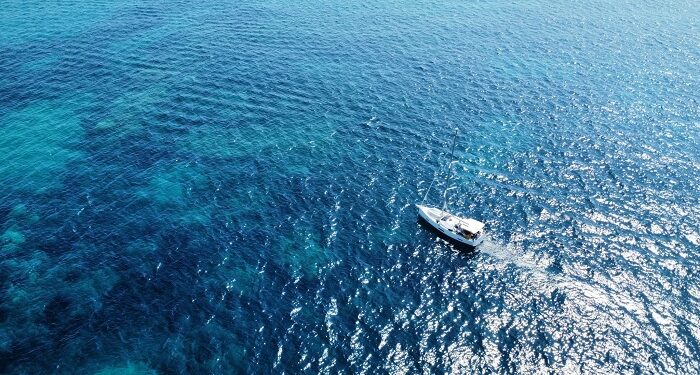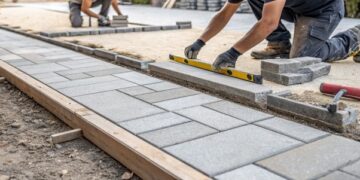Choosing the right fishing boat in 2025 takes more than scrolling through glossy photos and brand names. It’s about knowing your fishing style, budget, and what kind of hardware makes a real difference on the water. One piece of equipment often overlooked but essential for setup and safety is Turnbuckles and Stay Adjusters — small components that play a big role in stability and performance. Whether you fish solo on lakes or take offshore trips, the right boat setup makes or breaks your experience.
Know Your Fishing Style
Before you buy anything, decide what kind of fishing you actually do. That’s the foundation for choosing the perfect fishing boat.
- Freshwater Fishing: Lakes and rivers need smaller, lighter boats — aluminum skiffs, jon boats, or bass boats. Easy to launch, tow, and maintain.
- Inshore Saltwater: You’ll need something versatile with a shallow draft like a bay boat or center console to handle waves and tight spaces.
- Offshore Deep Sea: Bigger water demands bigger boats. You’ll want twin engines, tall gunnels, and a stable hull built for rough seas.
- Mixed Use (Family + Fishing): Dual-console or deck boats offer comfort with enough deck space for fishing gear.
Your boat choice should always fit your main environment and target fish.
Size and Hull Type
The hull is what keeps you comfortable and stable. The wrong one will ruin your trip no matter how powerful the engine is.
- Flat-bottom hulls: Ideal for calm lakes and shallow waters. Stable but rough in choppy conditions.
- Modified-V hulls: Great all-around design, handling both smooth and moderate chop.
- Deep-V hulls: Built for offshore use — smoother ride through waves but requires more power.
- Catamaran hulls: Twin hulls for ultimate balance and stability offshore.
Choose a hull that fits your usual conditions. Bigger isn’t always better; balance matters more.
Power and Performance
Match the engine size to your hull. Overpowering wastes fuel; underpowering limits performance. Most boats perform best at 75–90% of their maximum rated horsepower. Stick with trusted names like Yamaha, Mercury, or Suzuki for reliability.
If you plan to mount extra gear like Turnbuckles and Stay Adjusters for rigging or tension control, factor that into your setup. These components help stabilize deck structures, support canopy tension, or fine-tune cables — all key if you’re customizing your boat for fishing precision.
Boat Material: Aluminum vs Fiberglass
- Aluminum: Lightweight, easy to trailer, and durable for freshwater. Great for rivers, lakes, and shallow runs.
- Fiberglass: Smooth ride, better aesthetics, and more suited to saltwater. Handles waves better but heavier and needs more care.
If your fishing involves rough saltwater or offshore conditions, fiberglass wins. For inland fishing or budget-conscious buyers, aluminum is the smarter choice.
Fishing Features That Actually Matter
You don’t need luxury, but you do need function. Prioritize these essentials:
- Livewell and Baitwell: Keep bait and catch fresh all day.
- Rod Holders: Built-in or add-on holders for multiple lines.
- Fishfinder and GPS: Must-haves for serious anglers.
- Casting Deck: Open, flat space with anti-slip surface.
- Storage Compartments: Organize tackle, gear, and safety kits.
- Bimini Top: Shade that doubles as support for Turnbuckles and Stay Adjusters when adjusting canopy tension or anchoring support frames.
Budget and Buying Smart
Fishing boats vary from $15,000 to over $100,000. Don’t just look at sticker prices — consider ownership costs: insurance, maintenance, storage, and fuel.
Used vs New:
- Used boats save you 30–40% but inspect the hull, engine hours, and electronics closely.
- New boats come with warranties, latest features, and financing flexibility.
A used boat with quality rigging — including stainless Turnbuckles and Stay Adjusters in good shape — often performs just as well as a new one at half the cost.
Test Before You Buy
Always test drive your fishing boat before signing. Feel the balance, check acceleration, and test how it handles turns and waves. Watch how stable it stays when multiple people move onboard. A good boat should feel steady, predictable, and easy to control.
Inspect the hardware: check Turnbuckles and Stay Adjusters, cleats, and deck mounts for corrosion or looseness. Quality hardware is non-negotiable — it’s what keeps your setup safe when conditions turn rough.
Maintenance and Longevity
Even the best fishing boats demand upkeep. Regularly rinse with fresh water, wax fiberglass hulls, and grease fittings. For rigging, lubricate Turnbuckles and Stay Adjusters to prevent galling and corrosion. Tighten all hardware seasonally.
A well-maintained boat runs smoother, lasts longer, and holds resale value. Most importantly, it stays safe.
Trends in Fishing Boats for 2025
Technology and sustainability are reshaping modern fishing. Expect more:
- Electric outboards for clean, quiet operation.
- Self-leveling trim systems for smoother rides.
- Digital displays integrating sonar, radar, and GPS.
- Lightweight composite hulls for fuel efficiency.
Upgrades like smart rigging control — even powered Turnbuckles and Stay Adjusters — are becoming mainstream, offering precision tension control and remote monitoring.
Final Thoughts
The perfect fishing boat isn’t just about brand or price — it’s about the right balance of design, power, and hardware. Invest in features that make a difference on the water, not just what looks good at the dock.
Smart boaters know small details like Turnbuckles and Stay Adjusters can drastically improve stability, canopy setup, and safety. Combine that attention to detail with the right hull, power, and features, and you’ll have a boat built for both performance and peace of mind.


















